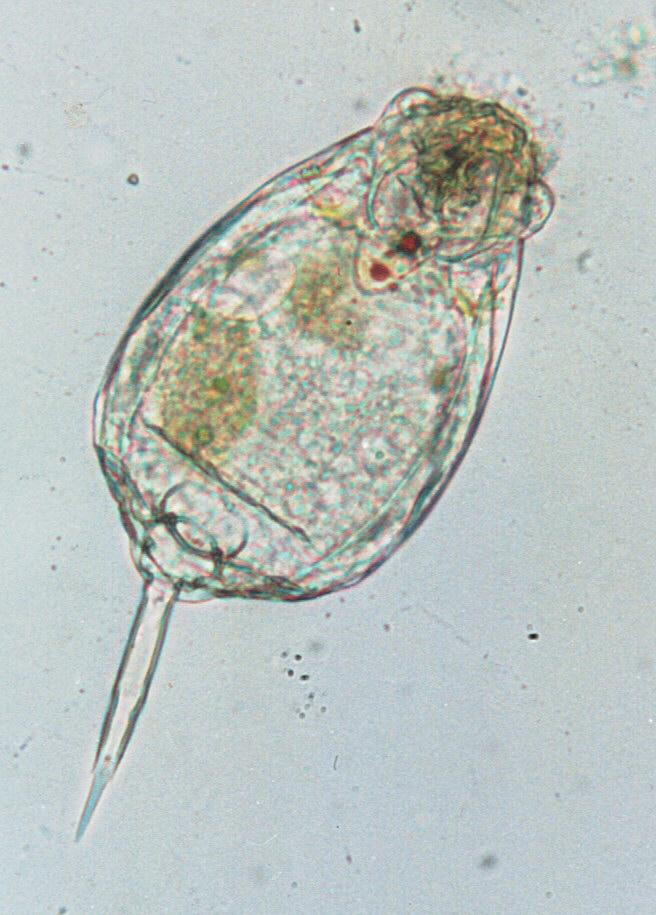|
Protozoa - new scans, #7 - "wheel animal" Lecane lunaris
| 제목: | Protozoa - new scans, #7 - "wheel animal" Lecane lunaris
| | 올린이: | Schmode (schmode@vossnet.de)
| |

| 파일크기 : 83838 bytes
File date : 2001:02:21 16:31:42
해상도: 656x915
Jpeg process : Baseline
Posted Newsgroups: alt.binaries.pictures.animals
Posted 촬영일: 19 Aug 1998 15:32:08 -0500 |
Hi everybody,
The organism being shown today, just as the Nauplius you may have seen
before, is no "real" Protozoon because it consists of more than one
cell. Its taxonomical name is Lecane lunaris.
Lecane lunaris, regardless of its crab-like appearance, is a member of
the worm family. It is a cell-constant organism which means that the
hatchlings emerging from the eggs have a distinct number of cells which
never changes throughout the life span of the animal. The cells are tiny
in relation to the one of a ciliate; an average-fed Paramecium caudatum
measuring 1/10 of an inch beats Lecane in length.
The most remarkable feature of Lecane is its feeding apparatus. As you
can see there is a prominent zone on both sides of the head. This zone
is covered with cilia wich can only be guessed in this still shot. If
you watch Lecane under the microscope you will usually find the cilia in
motion; they are extended when moving inward but flat to the body when
moving the other direction. Thus a vortex is produced which flushes
Lecane's food right into its mouth which is located in the middle of the
head. This cilia motion makes the prominent zones on the head look like
little wheels in rotation; in fact, the English translation of the
common name of Lecane and its family is about "wheel animal", the Latin
class name is Rotatoria.
The menu of Lecane is very versatile. They have no food vacuoles such as
amoebae or ciliates but a real, sophisticated stomach which enables them
to not only eat algae and bacteria but also plantal parts being in
bacterial degradation; this sort of vegetables, by the way, is called
Detritus.
Lecane, as you can easily see, has got two red eyes. One of them is
located in the front part of the head; the other one - the lower one on
this shot - is found on the upper part of the body shell. The shell
varies in stiffness; Lecane has a complex muscular system allowing the
head and the rear antenna to be retracted in case of emergency.
Reproduction of Rotatoria is usually non-sexual. Sexual reproduction may
come into play as a result of environmental factors. Like an example?
For a certain species of the Rotatoria class called Asplanchna sexual
activity is triggered by eating a certain sort of algae which contains a
lot of vitamin E.
Viagra for Protozoa - would you believe it?
So long,
Ralf
name="Lecane.jpg"
^o^
동물그림창고 똑똑전화 누리집
^o^
|
|
|

